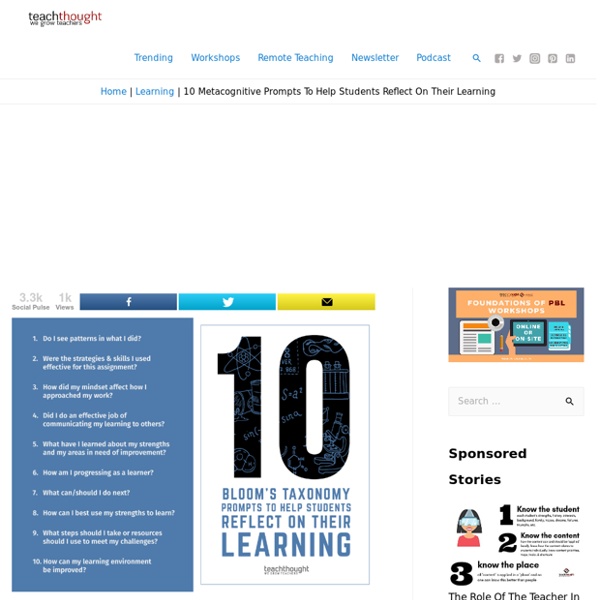10 Team-Building Games That Promote Critical Thinking
Via TeachThought One of education’s primary goals is to groom the next generation of little humans to succeed in the “real world.” Yes, there are mounds of curricula they must master in a wide breadth of subjects, but education does not begin and end with a textbook or test.
Sample Report Card Comments for Any Teaching Situation
Effective parent-teacher communication is a cornerstone to effective parent involvement. Each progress report and report card provides an opportunity for teachers to give parents insight into their child’s performance beyond a letter or numerical grade for conduct or academics. Parents want to know how their child is doing, but they also want to know that their teacher gets their child. Report cards also let students learn what they are doing well … as well as areas for improvement.
7 Ways to Inspire Divergent Thinking in the Classroom
The world is unpredictable. The corporate ladder is now a maze, which means our students will need to think divergently. In this article, we explore how to integrate divergent thinking into our everyday classroom practices. If you enjoy this blog but you’d like to listen to it on the go, just click on the audio below or subscribe via iTunes/Apple Podcasts (ideal for iOS users) or Google Play and Stitcher (ideal for Android users).
Common Core in Action: 10 Visual Literacy Strategies
Do you wish your students could better understand and critique the images that saturate their waking life? That’s the purpose of visual literacy (VL)—to explicitly teach a collection of competencies that will help students think through, think about, and think with pictures. Standards Support Visual Literacy Instruction Visual literacy is a staple of 21st century skills, the idea that learners today must “demonstrate the ability to interpret, recognize, appreciate, and understand information presented through visible actions, objects, and symbols, natural or man-made.” Putting aside the imperative to teach students how to create meaningful images, the ability to read images is reflected in the following standards. Common Core State Standards
Discover, Discuss, Demonstrate: Using Inquiry-Based Learning to Keep Students Engaged
As we get further into the second half of the school year, a focus on engagement will be key to refining our practices and increasing impact. Teachers can simplify and help students discover, discuss, and demonstrate to thrive. The 3 Ds is not a new model for learning design, and it aligns with other inquiry-based learning models designed for deeper learning.
The Great Question Press
Why should teachers nurture potent questioning skills and behaviors? As a practical matter, students need to be able to read between the lines, infer meaning, draw conclusions from disparate clues and avoid the traps of presumptive intelligence, bias and predisposition. They need these thinking skills to score well on increasingly tough school tests, but more importantly, they need these skills to score well on the increasingly baffling tests of life . . . how to vote?
How Learning Emotional Skills Can Help Boys Become Men - MindShift
“What I realized they needed was what I needed in high school. I needed a space to just be human. And to be like, ‘I’m going through stuff, and I don’t get to talk about it, I just have to pretend everything is great. Everything is not. I’m struggling.’” And just like that, without even meaning to do it, Branch started the Ever Forward Club.
Useful Tips on Writing Essential Questions
written by: Keren Perles • edited by: Wendy Finn • updated: 9/11/2012 Essential questions can make the lesson planning process more effective, but many teachers struggle to write quality essential questions for their lessons. Read on for a step-by-step guide to writing essential questions. 1. Choose the Main ConceptThe first step to writing essential questions is to write down the main concept that you are trying to teach your students. Although this may seem obvious at first, many teachers find that once they write down what they are trying to teach, they realize that they should really be focusing on something entirely different.
Questions Students Can Ask Themselves Before, During, And After Teaching
75 Questions Students Can Ask Themselves Before, During, And After Teaching by Terry Heick Are there questions students can ask themselves while you’re teaching? Questions that can guide and support their own thinking and awareness before, during, and after your teaching?



